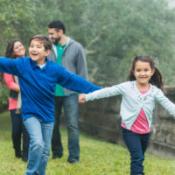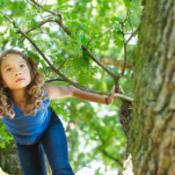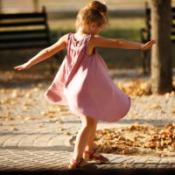 Children experience the world through action, play, and exploration. They are propelled by their bodies and guided by their senses. Thus, it is important children in therapy are not expected to sit on a couch for 50 minutes and spout logic and reason. This is not the natural state of childhood.
Children experience the world through action, play, and exploration. They are propelled by their bodies and guided by their senses. Thus, it is important children in therapy are not expected to sit on a couch for 50 minutes and spout logic and reason. This is not the natural state of childhood.
A child’s biological tendencies do not begin with logical thought—though this does come with time. Children are more driven by their impulses, feeling sensations, and day-to-day happenings. It is vital a children are able to bring their whole selves, brain and body both, into the therapy room, a setting of safety and acceptance.
When the body is engaged in therapy, the brain is also engaged. Higher brain processes, such as critical thinking, are often the focal points of therapy. But this means the body and all of its wisdom, skill, and purpose may be left out of the interaction. It is important to enlist both the brain and the body when working with children. Doing so can help the brain integrate information and work toward easing symptoms that present in the body. Engaging the body in the therapy process can also help therapists meet children at their developmental level by facilitating a more interactive learning experience.
How Can the Brain Be Integrated?
It is often obvious when a child is upset or struggling. You can see the signs in their body. For example, a child might sob, stomp their feet, throw themselves on the floor in a physical tantrum, run away, scream, or hit. In a heightened emotional state, a child’s body takes over, while logical thought and reason are put on pause. But when the body is active in therapy, brain processes, and integration of the brain overall, are likely to improve.
Integration of the brain can happen in two ways:
- On the right and left sides of the brain. The right side of the brain is generally responsible for non-verbal (bodily) communication and for creative processes. It is also responsible for play and autobiographical expression. The left side of the brain is connected to logic, language, and organization. Children, especially young children, are generally right-brain dominant. They express through play and creative processes (Siegel & Bryson, 2012). By allowing the right side of the brain to be active in therapy through movement, play, and action, a therapist can meet the child at the developmentally appropriate level. Furthering the process with age-appropriate verbal reflection assists in integrating both sides of the brain.
- In the upper and lower parts of the brain. The lower part of the brain governs automatic responses, including the fight, flight, or freeze response to danger. The higher, outer part of the brain is involved with judgment, problem solving, and thinking through situations (Siegel & Bryson, 2012). The higher, thinking part of the brain has limited capacity when the lower brain is activated. Not feeling safe, experiencing new situations, and/or having a history of trauma are just a few ways the lower brain may be activated. Regulation of the lower brain generally comes from interventions involving the senses. Smell, sound, body movements, grounding, and breathwork might all be used to assist a child with lower brain regulation.
In summary, children are generally more right-brained, which connects closely to the body. Ideally all parts of the brain can be engaged in the therapy process. But this requires both the brain and the body to be involved.
Symptoms in the Body
Children express their feelings, and show symptoms, on a bodily level. A therapist might notice some of the following body-based symptoms:
- Tension
- Fidgeting
- Repetitive movements
- Physical aggression
- Self-harming behaviors such as head-banging
- Low energy
- Hyperactivity
Children might also experience body-based symptoms that are not visible, such as:
- Increased heart rate
- Rapid breathing
- Somatic pains such as headaches and stomachaches
Addressing a child’s presentation through brain-based interventions may provide some change and relief. However, because integration of the whole brain is vital for overall well-being, a quicker and more direct path to healing may be to address symptoms in their organic form—in other words, through the body. For example, a child who experiences hyperactive and impulsive behavior may need to learn and practice new ways of using the body while utilizing a physical outlet for the presenting hyperactivity.
How Can Therapy Be Made Enjoyable?
Which therapy experience would a child most likely prefer: sitting on a couch, verbally describing their day and memorizing coping mechanisms? Or engaging in movement and/or play to reenact parts of their day while learning to cope with difficult experiences through the body?
Children are not biologically designed to sit in one place and think critically. They are movers, explorers, and creative expressers. Children engage with the world through action. Therefore, therapy should be a space for clinical intervention with age-appropriate, action-oriented techniques. Having the tools of childhood (action, play and creative expression) in the therapy room will help make room for a therapy experience that is positive and validating. As a result, it is likely to lead children to increase their investment in therapy
What Types of Therapy Engage Both the Brain and Body?
Many forms of child-focused therapies provide intervention that support both the brain and body. Dance/movement therapy, play therapy, and other expressive arts therapies (art, music, and drama therapies) are structured around holistic engagement.
Dance/Movement Therapy
The psychotherapeutic use of movement to further the social, cognitive, physical, and emotional integration of a child, dance/movement therapy is rooted in the belief that there is an inherent connection between the mind and body. Specially trained dance/movement therapists use movement as the primary tool to address clinical goals.
Play Therapy
The use of play theory and methods can help establish an interpersonal process in which trained therapists help children prevent or resolve psychosocial difficulties and achieve optimal growth and development through play. Play therapists use the languages of childhood: play, imagination and exploration. These typically involve the whole body with a goal of facilitating emotional processing and change in children.
Art therapy, music therapy and drama therapy are other action-oriented therapies that engage the both body and brain in the therapy process.
Looking for a dance/movement, play, or expressive arts therapist? Begin your search for a counselor with GoodTherapy’s therapist directory.
References:
- American Dance Therapy Association. (n.d.). Retrieved from https://adta.org
- Siegel, D. J., & Bryson, T. P. (2012). The whole-brain child: 12 proven strategies to nurture your child’s developing mind. London: Robinson.
- Why play therapy? (n.d.). Retrieved from http://www.a4pt.org/page/WhyPlayTherapy

The preceding article was solely written by the author named above. Any views and opinions expressed are not necessarily shared by GoodTherapy.org. Questions or concerns about the preceding article can be directed to the author or posted as a comment below.

 Just Say No to Saying 'No': Better Ways to Improve a Child’s Behavior
Just Say No to Saying 'No': Better Ways to Improve a Child’s Behavior How Can We Help Children Become More Resilient?
How Can We Help Children Become More Resilient? How Dance/Movement Therapy Can Help Kids Learn to Regulate Emotions
How Dance/Movement Therapy Can Help Kids Learn to Regulate Emotions

Please fill out all required fields to submit your message.
Invalid Email Address.
Please confirm that you are human.
Leave a Comment
By commenting you acknowledge acceptance of GoodTherapy.org's Terms and Conditions of Use.